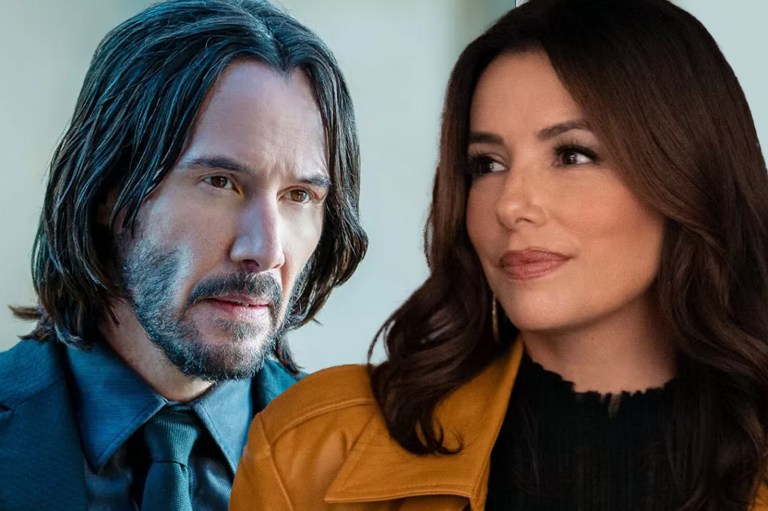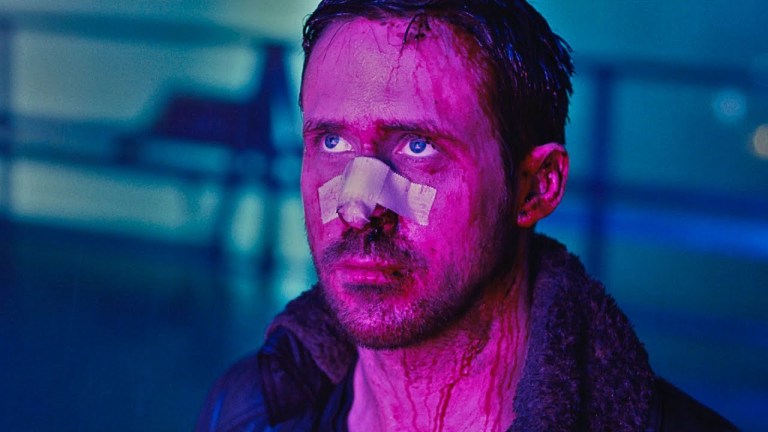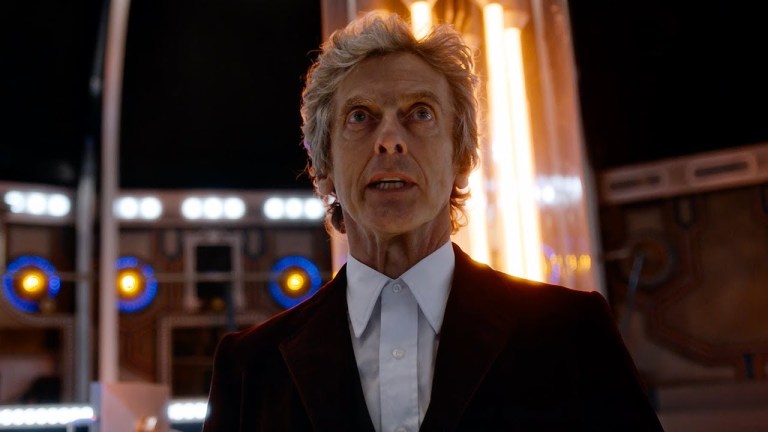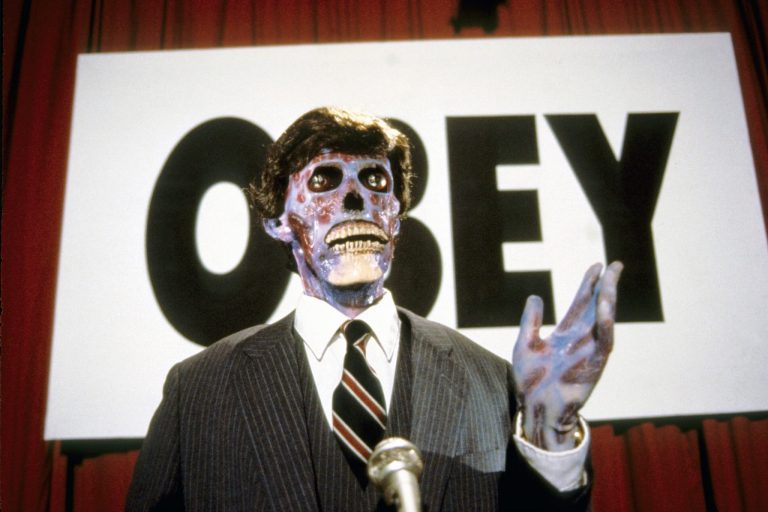
10 Years Ago, ‘John Wick’ Saved the Action Genre from ‘Fast & Furious’ Clones
A decade ago, Keanu Reeves' John Wick changed the action genre for the better – and it's time that the franchise gets its flowers.
A decade ago, Keanu Reeves’ John Wick changed the action genre for the better – and it’s time that the franchise gets its flowers.
To say John Wick hit the mark in 2014 would be the understatement of the century. The gun fu action extravaganza tore through the doors of cinemas and refused to leave, firmly setting its place at the table of mega-money movie franchises. To this day, fans can’t get enough of the Baba Yaga and the world of high-stakes mercenaries, lapping up multiple sequels, spinoffs, a prequel miniseries for John’s long-time associate Winston Scott, and whatever else awaits ahead.
John Wick‘s influence doesn’t only lie in the fact it forces the audience to stare down a barrel of fun and perfectly choreographed scenes, but also in how it played an underappreciated role in revitalizing the genre. It seems like a long time ago now, but in those days, the biggest name in action was Fast & Furious. The future looked bleaker than an extended holiday in Gotham City until a famous hitman came out of retirement to save everyone from Dom Toretto and his family’s outlandish shenanigans.
A simple story that dared to stand out from the action genre in 2014
Death Wish. Die Hard. First Blood. What do all these action classics have in common? They’re easy to follow. Each of their plots can be described in a single sentence, making it highly unlikely that the audience will ever need to ask for narrative directions along the way. John Wick possesses the same appeal as it follows the story of a retired hitman (Keanu Reeves) who seeks revenge against Russian gangsters for breaking into his home, killing his dog, and stealing his car. It isn’t even the fact that the goons take his Mustang or rough him up, but what they do to the cuter-than-a-button Beagle named Daisy. Anyone who is a dog lover knows how they would turn into a wrecking machine if anyone hurt their four-legged friend, so John’s anger is more than justified here.
John Wick doesn’t rely on expensive special effects or outrageous setpieces that see him dangling from the wing of a Boeing 747. Instead, the film places value on color-driven cinematography from the lens of Jonathan Sela. Despite the darkness of the tale, the lighting of the scenes create a striking neon world to explore and learn more about. With the mood set in stone, the stunt experience of directors Chad Stahelski and David Leitch comes into play, as they orchestrate operatic fight scenes that cherish single-take carnage rather than multiple cuts and shaky cam deception. Much like John’s approach, every action sequence proves to be precise, lethal, and efficient in its execution.
Discussing the look and feel of John Wick, Leitch told JoBlo: “I think there [are] a lot of inspirations. We’re fans of Spaghetti Westerns, [Akira] Kurosawa, and the Korean movement of films. And we like minimal composition and we like simple stories.” After which, Stahelski added: “We wanted something that was the opposite of what was already out there.”
The Fast & Furious model was only going to crash and burn
In terms of what was out there in 2014, the Fast & Furious was arguably the biggest action franchise at the time. The movies had already started to embrace the ridiculousness. Gone were the early days where the characters raced souped-up cars and there was a paper-thin story about crime. Instead, the films became all about nonsensical plotlines, outrageous stunts, superhero-esque feats, and the kind of explosions straight out of Michael Bay’s wettest dreams. While this franchise was never quite Othello to begin with, it became the poster child of style over substance.
Some people like this, and there’s nothing wrong with it. Essentially, Fast & Furious is like a loud Creed concert – no one knows what Scott Stapp is singing, but it’s a vibe to be there. That said, there’s a point in which it’s tough to suspend one’s disbelief; the audience wants something more authentic and believable. Sure, the Fast family hadn’t gone into space yet or jumped buildings at the time, but c’mon, anyone who drives the same vehicles knows there’s always a worn shock or oil leak to fix and the turbos always pop, so how do they do all of this?!
Even though John Wick boasts its fair share of conveniently placed fights and strategically placed weapons, it grounds the action somewhat. It takes it back to the days of Charles Bronson pictures, where one man holds the ability to take on a group of thugs with only his guile and fighting prowess. More importantly, John Wick cost a fraction of Fast & Furious 6. It showed Hollywood that not every action blockbuster needs to be the price of a small country’s GDP – it’s possible to make something on a lower scale and still deliver the thrills and spills to keep the fans coming back for more.
John Wick is what every modern action movie strives to be
While Fast & Furious sent the wrong message to Hollywood about indulgence, John Wick reminded everyone to not go off the deep end too much. In retrospect, it’s a lesson that’s served everyone well, since every studio appears to be on a massive cost-saving initiative while the state of cinema remains uncertain and blockbusters become flopflusters. It’s much easier to turn a profit on a $20 million movie than it is a $200 million feature, and cheaper productions are in vogue right now.
From Atomic Blonde to Nobody and Monkey Man, John Wick‘s influence permeates in modern-day action movies. Everyone dreams of replicating the successful formula, creating their own universe of budget-friendly films that feature unforgettable characters and easily accessible stories. The loner-versus-the-world subgenre also continues to be a hot commodity, while proving to be perfect for streaming platforms if cinema isn’t an option. It’s a win-win in one of the film industry’s most risk-averse periods.
At this point, though, no one can deny that John Wick has firmly established himself as an icon of the genre alongside other legends like John McClane, John Rambo, and Paul Kersey. Maybe it was a Hail Mary from Lionsgate or someone actually looked into a crystal ball and saw what the future would like. Nonetheless, if this revenge tale hadn’t come along when it did in 2014, one wonders what action movies would look like nowadays – or if the genre would even be relevant.











